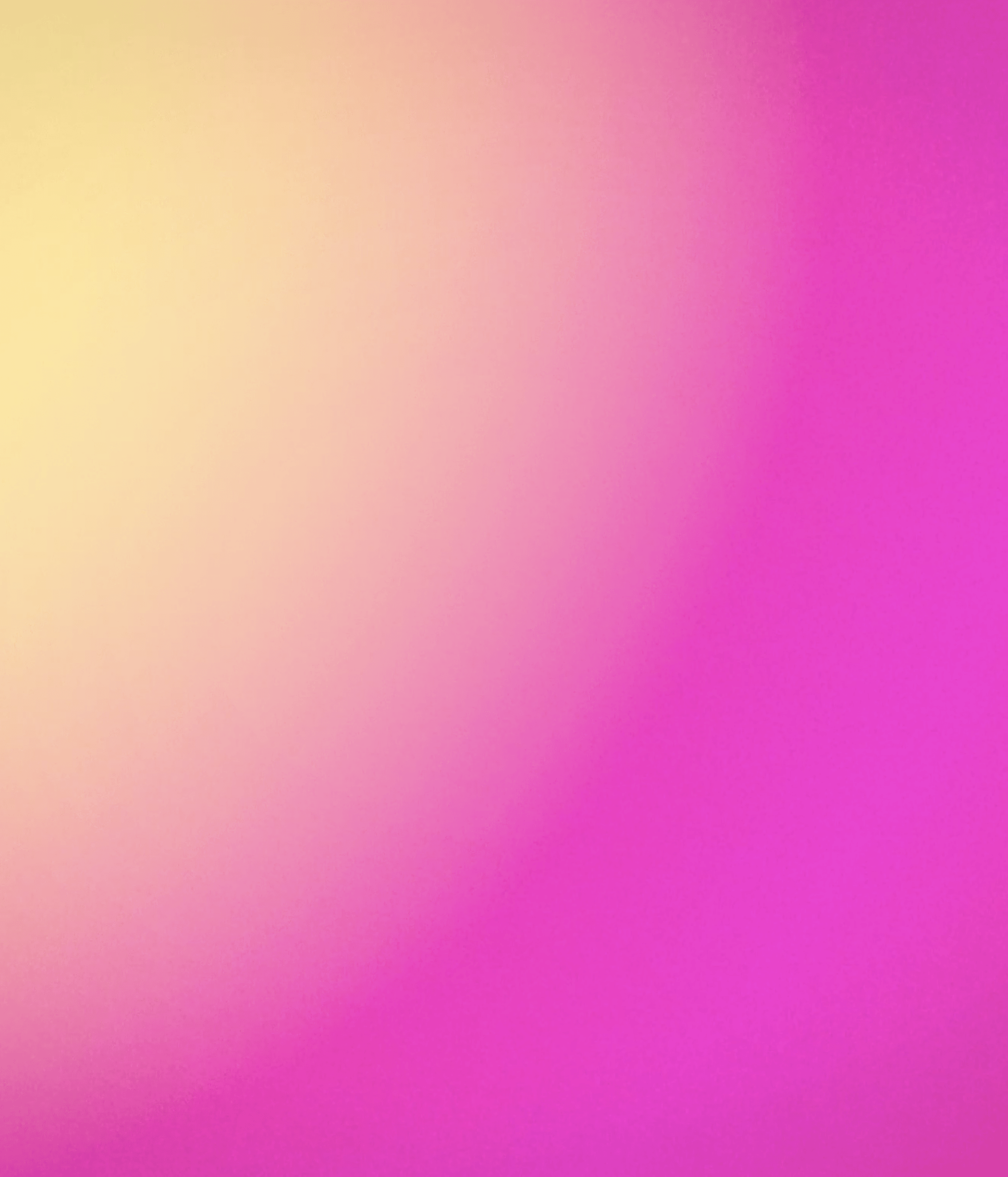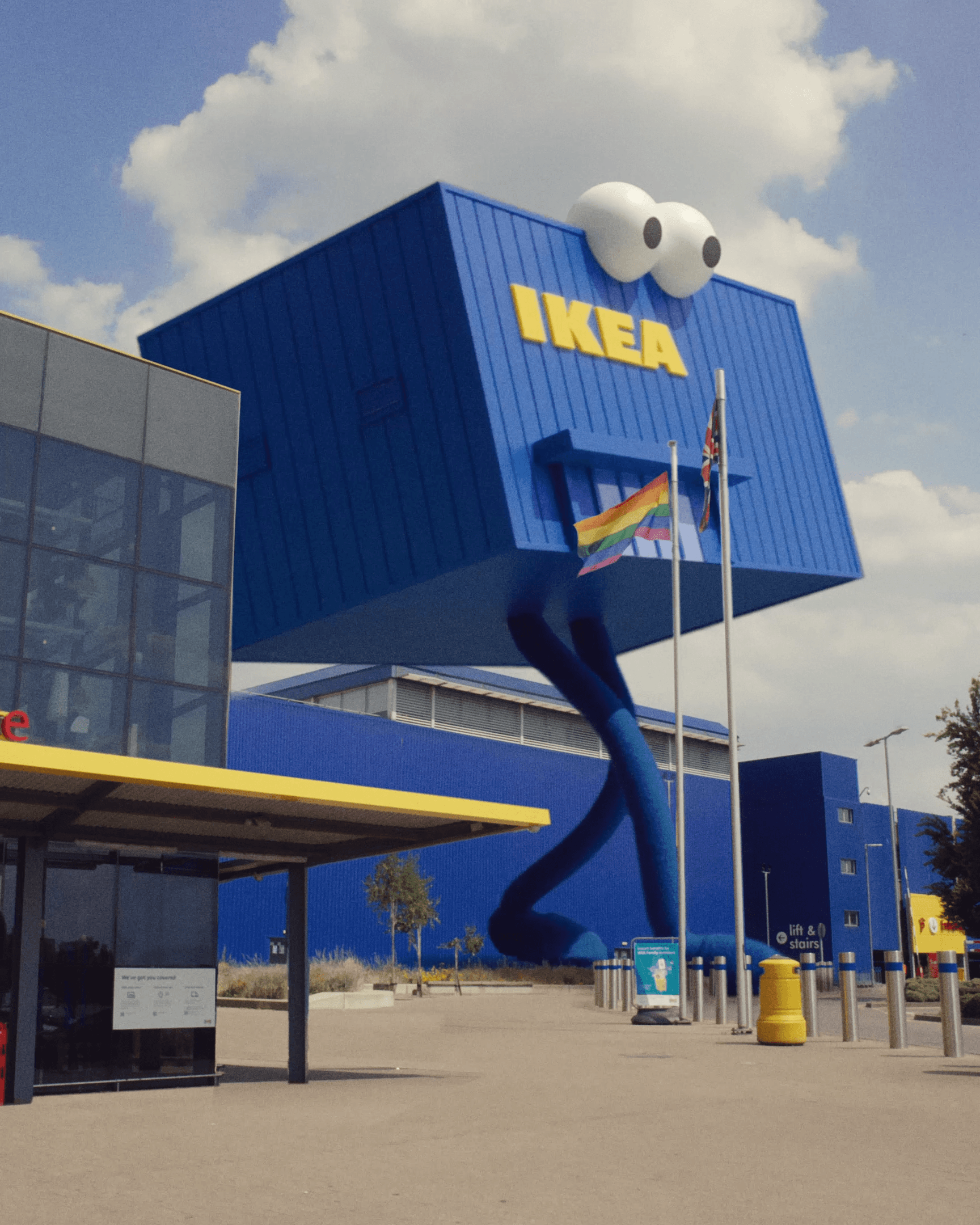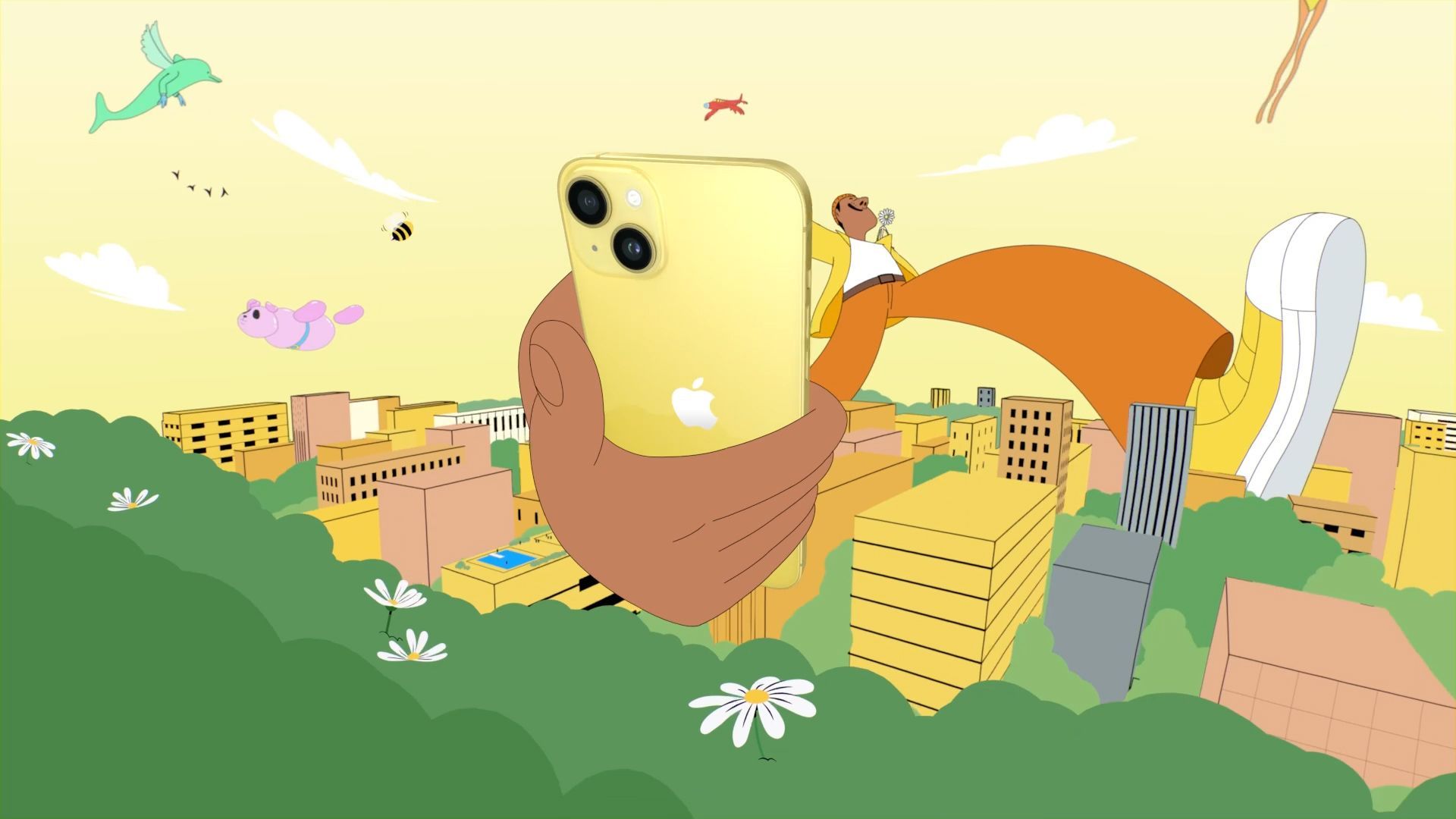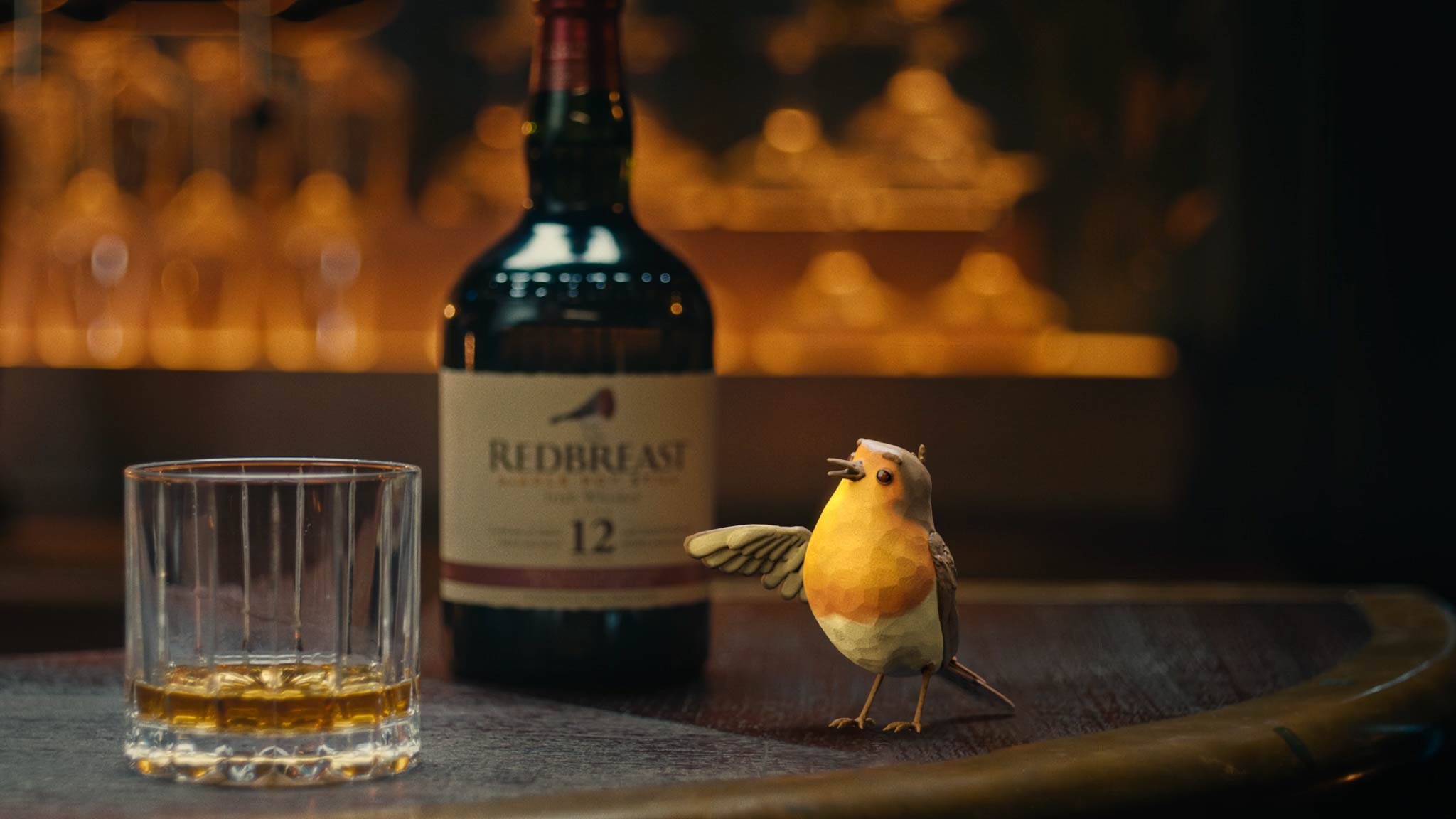

Introducing: Practice
A directing duo with a playful, creative animation style, Practice loves combining real props with digital 3D elements to create tactile looks and achieve actions that aren’t feasible to construct by hand. Having met while working on Sesame Street and enjoying the vibe there, the duo bring a sense of silliness and positivity to every project. Grounded in the physical world with a little sprinkle of digital 3D to amplify their eccentric, larger than life concepts that are guaranteed to elicit joy.
Tell us about yourselves, what's your story?
We’re a bit like a peanut butter and jelly sandwich. Each ingredient delicious on its own, but spread them together between 2 pieces of white bread and gazinga! We have a deep appreciation for what each other brings into our collaboration. There’s something greater than each of us individually.
We had been friends for a long time before we ever started collaborating, and would meet up occasionally to walk our dogs in the park and talk about work and life. On one of these walks, we both happened to be directing a short film for Sesame Street, independent of one another. We were chatting about how much we enjoyed the positivity and joy of these projects, and wouldn’t it be amazing if we could take this spirit of joy and channel it into our commercial work. From that point forward we started to share a studio space and collaborate on projects - and not long after we founded Practice.
What have been the major events in your career so far that have helped develop your style?
Adrian: I got into CG in its early days. At age 21 I interviewed at ILM. Gail Currey told me to see if I could come up with new ways to animate human faces with the computer. They were working on Terminator 2’s liquid metal man at the time. I took that directive to heart and brought innovation into my process. Years later I spent time with practical FX legend Douglas Trumble both in Colorado and at his studio in Massachusetts. His commitment to bring back miniatures and practical photography in service of realizing the fantastical made a deep impression on me.
Mike: When I got out of college with a degree in graphic design, the field of motion graphics and vfx was blowing up, so I moved to Los Angeles from San Francisco and jumped in head first. I worked long hours on a lot of big commercial projects and music videos and learned a ton. It was fun, but ultimately I got burned out and started to lose my creative spark. I was living in the San Diego area when I went to see Fantastic Mr. Fox with my kids on a cold, rainy winter day. It was a revelation for me. Fast forward a few months, and an opportunity came up for me to direct a brand video for a startup company. I decided I would do it all in stop motion, and as they say, everything changed for me. I began working with physical materials whenever I could and soon after set out on my own, eventually co-founding Practice.
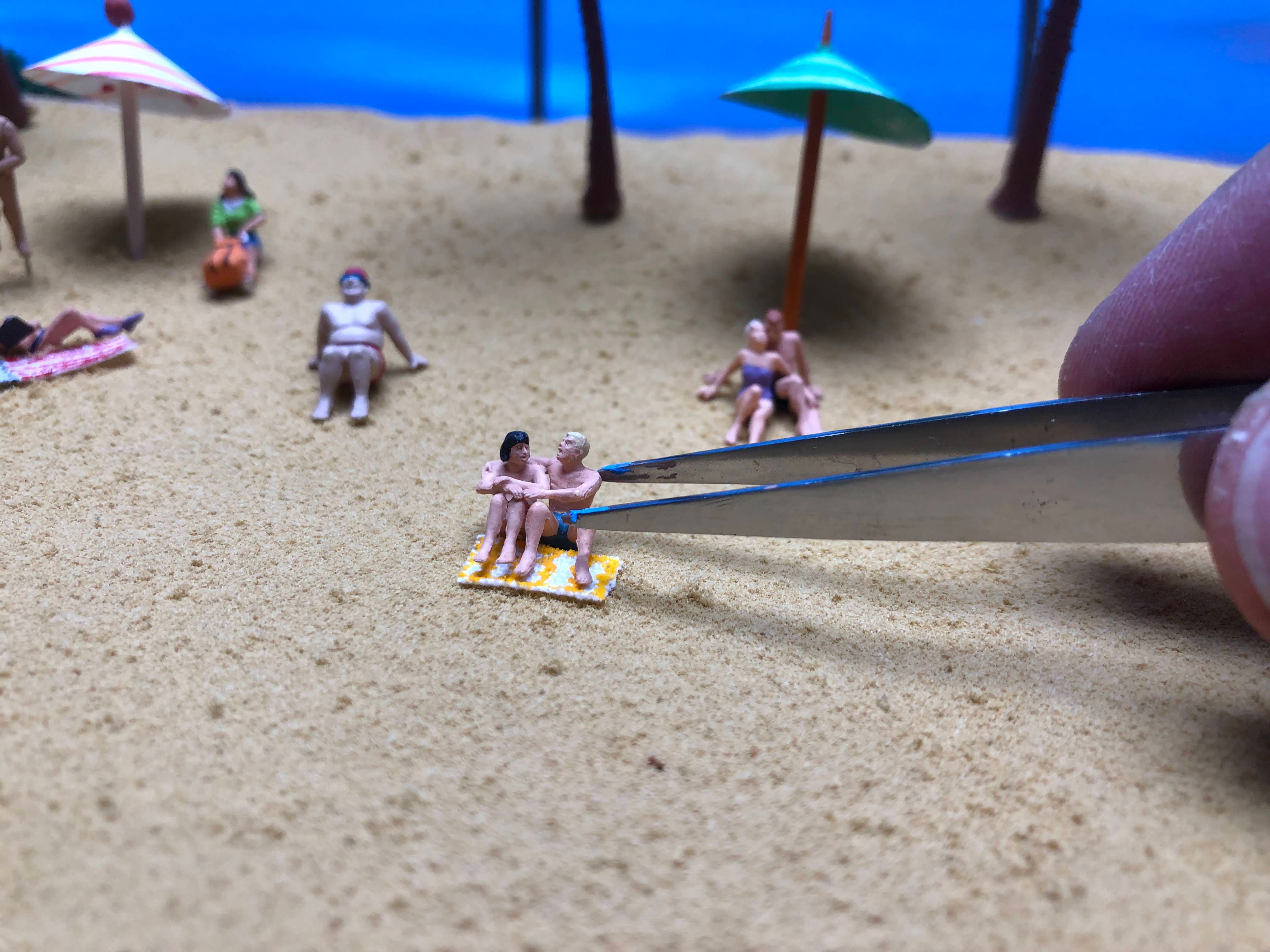

Where does your offbeat approach come from?
We’re just a couple of weirdos. And we love weirdos because weirdos are creative. I think when weirdos find that they can invent a new playing field outside the predefined ones - a joyous energy arises.
Our sense of humor comes from an appreciation of the fringe. The fringe of our experiences may be what shows us our humanity. It’s a place to truly connect.
Can you describe the strengths of one another as a creative partner in a few words?
Mike is… thoughtful, kind, a wizard with design, delighted by each discovery of a new medium of expression, funny, a trumpet player and a french speaker.
Ade is…kind of like if Alan Watts was a filmmaker - Zen yet Zany, finding the joy and humor in just about anything. He’s also a bit of a mad scientist, able to make just and do just about anything that comes across his plate. His best question is always “What if?”.

You're based in LA & Denver, what are your favourite things about where you live?
Mike: LA is the epicenter of filmmaking. You can’t order a coffee without bumping into someone. The ability to find like minded artists and helpful connections is unparalleled.
Ade: Denver is a burgeoning scene with a community of creatives that are on fire to make this perfect lifestyle location also be a fantastic place to make film.
How do you create such a collaborative team working across states?
Google Docs and Zoom! And when we’re in the same city, scouting a new Indian restaurant we haven’t tried yet. We actually used to live just down the street from one another in Denver where we started Practice and our families are very close. Mike recently relocated back to Los Angeles, but we’re both back and forth between the two cities pretty often.
Additionally, we’re always in conversation about what’s inspiring us, what we’re reading, what we’re listening to, and of course just talking about our lives and families. Collaboration is a practice. It’s the practice of sharing and listening and trusting that doing so will reveal a creative solution that a single mind would not discover on its own.
You use a real mix of techniques in your work - how do you know which to use for specific projects, and what do you think are the benefits to brands of you having such a broad skill set?
Generally speaking we are looking for that heart of authenticity that comes from using practical techniques. But the final decision on what techniques to use often come down to goals and ambitions of the project. Brands will find in us partners in a very creative, collaborative process that lets us widen out the field of possibilities for execution. They can be confident that we’ll deliver great results whether it's props, people, puppets, paper or drawings.
How do you fuse traditional techniques with digital / Faux motion as needed to meet the specific requirements of a project?
When we use VFX techniques we do so informed by the practical. For example - in How Far is Away - we made a felt puppet of a fish, then used that as the model to make a CG version of a felt puppet of a fish, which we could animate digitally with more freedom. But in this round about process, the lo-fi nature of the physical model remains, and we don’t get too fancy or “perfect” in our 3D.
How do you balance the unusual and comical in your style with the needs of a commercial brief?
We have to ask ourselves what the heart of the commercial is asking for. Hopefully we can help reveal that heart with our offbeat take. Then our job is to mind meld with the client and bring the best product possible to life. Fortunately, our clients are coming to us because they want something a little left of center, so they’re already primed to make a spoof of a 90’s sitcom featuring characters made from plumbing supplies, for instance. Not everything needs to “jump the shark” as we say here in the States, but it sure is more fun.
At what point in a project do you decide to mix the stop mo with the ‘faux’ mo? And why?
(I like that - faux mo - I think we may have to steal that.)
We believe there’s something magical that happens when we work with physical objects, whether that’s animating with stop motion, creating puppets or designing sets for live shoots. There’s also more room for the unexpected and “happy accidents”. That being said, we’re both digital artists, and nearly always incorporate 3D or VFX into our projects. 3D/Digital is frequently part of our process in one way or another, often as a way to previsualize our shots and to develop the models that we make by hand.
It’s important for us that everything being filmed and animated exists in physical space, but we’re not purists about it. Sometimes, it just makes more sense for an element to be created in 3D and composited in the scene, rather than try to build every last detail by hand. For us it’s about the spirit and tone of working practically, created work that is grounded in the physical, but we’re agnostic about how we achieve that goal and enjoy being quite fluid in our use of “technology”.


What do you enjoy most about the collaborative nature of an animation shoot?
There are a lot of moving parts to an animation shoot, and also a lot of R&D that comes together during the shoot. Typically, we’ve been doing a lot of back and forth with our art department and everyone is showing up with models, props and puppets. We frequently need extra hands, and tend to pull in an unwitting PA to help out. It’s kind of like craft day for grown ups. No matter who you are, everyone likes to work a glue gun. But of course we’re showing up with tight boards and our shot list dialed in. As long as we have that down we can play around the edges and get those unexpected moments.
We love how when a film crew comes together and discovers that they get to be a part of puppeting a beard, or building a race track of rolling coins, or filming a beloved puppet - they light up with joy. Get enough people together experiencing joy - you’ve got magic on your hands.

How do you get into a creative mindset?
The first thing is to get out of the “creative mindset”. In other words, don’t try. We can all relate to this, of course. Our best ideas come to us when we’re out on a walk, or cooking dinner. Get off the screen and into nature. The creative spark can come from surprising places. Sometimes a conversation with our kids can be that spark.
Once we come together and are actively trying to bring forth an idea, we basically try to come up with the most ridiculous thing we can think of, to allow our minds to run free. We almost never show up with the right idea fully formed. It just doesn’t happen that way. Ideas spin loose from shaking the tree and laughing about it. In any creative relationship, whether as a duo or in a larger group, you’ve got to have an acceptance of stupidity. Judgement and second guessing your ideas is the fastest shortcut to not producing anything original.
Is there anything most people don’t know about you / that would surprise people to know about you?
Adrian grew up on a hippie farm in Oregon and had a goat named Happy… It gets even more surprising… Mike had a terrier mutt named Waggles, who got impregnated by the neighbor’s rottweiler… named Happy. Is this connection significant? More shall be revealed.
See Practice's Portfolio here.

What We Do
We specialise in bold visual content and brand storytelling.
